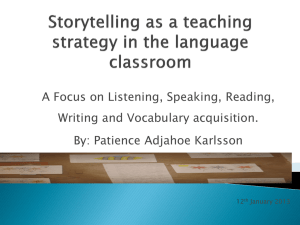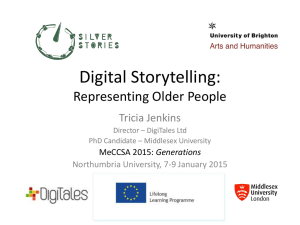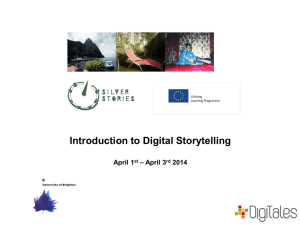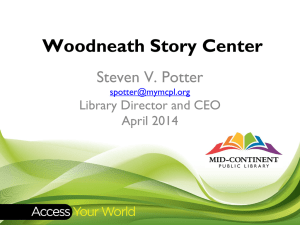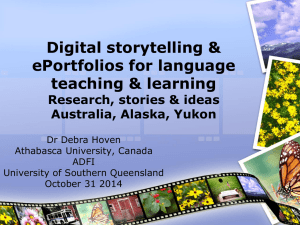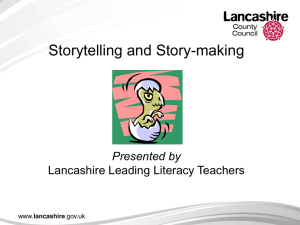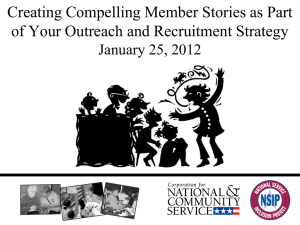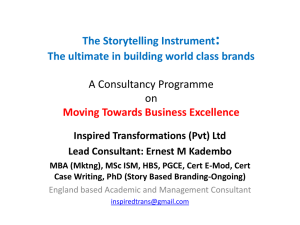Digital Storytelling as a Tool for Teaching
advertisement
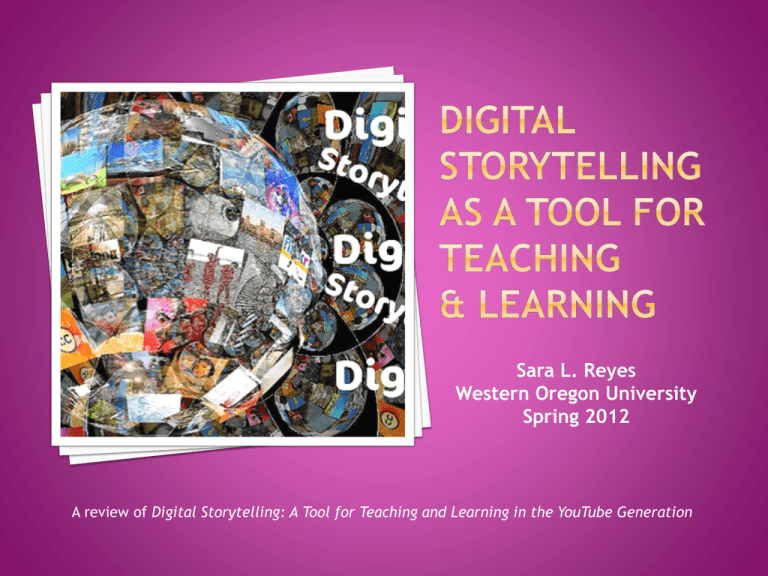
Sara L. Reyes Western Oregon University Spring 2012 A review of Digital Storytelling: A Tool for Teaching and Learning in the YouTube Generation “Digital storytelling is the art of combining narrative with digital media such as images, sound, and video to create a short story (Robin, 2008).” “In the Digital Storytelling Cookbook, Lambert (2006) identifies seven elements that are critical components of effective digital stories.” These seven components are: Point of view A dramatic question Emotional content The gift of your voice The power of the soundtrack Economy Pacing First year teacher Tyler Binkley creates online math video “vignettes” that teach critical math skills. His students visit his YouTube channel when they struggle with their math. He engages students with his unique style using: recurring characters themes jokes He learned about digital storytelling in his teacher education programs. Preservice teachers, like Binkley, created digital booktalks: Used iMovie and Movie Maker to create 2 minute long book trailers Used Flip Video cameras to shoot live action Created voice-overs Selected segments of music and sound effects Inserted titles and brief text His teacher (Kerper) invited students to Ning, a social networking tool. This tool was used so Binkley and his classmates could give feedback on what was clear and what was uncertain in each others’ videos. Students reported that their peers’ comments highly impacted their final product. 1. 2. 3. Make content and connections relevant to students’ lives. Digital storytelling connects students to content in ways that they’re accustomed to consuming information (i.e. watching TV, movies, and interacting in online forums). Students make their own videos and post them to YouTube. Viral videos are “the cultural currency of today’s youth.” Binkley focuses on three main components: 1. The mechanics of video editing 2. The techniques of modern storytelling 3. The integration of the content and medium Music and humor are standard elements in popular videos today… “Of the all-time top ten videos viewed on YouTube, six are musical and four are humorous (YouTube, 2010).” Implementation may be challenging. With web-based instruction, equal access for all learners must be considered including: Learning needs Socioeconomic backgrounds Educators must ask themselves: “Would all of my students be able to access content online or benefit equally from its presentation?” Article: Dreon, O., Kerper, R. M., & Landis, J. (2011). Digital Storytelling: A Tool for Teaching and Learning in the YouTube Generation. Middle School Journal, 42(5), 4-9. http://www.eric.ed.gov/PDFS/EJ934075.pdf Images: http://digistorytelling.pbworks.com/f/digistorytelling_logo.jpg http://www.atas.k12.ca.us/ausd/ahs/teachers/FacultySites/Bradley_vi deo_online/images/5_imovie_logo.jpg http://9.mshcdn.com/wp-content/uploads/2009/09/flip-minoheader.jpg http://blogs.ft.com/tech-blog/files/2009/07/ning-for-dummies.jpg http://cdnimg.visualizeus.com/thumbs/70/e0/illustration,music,music ,humor,music,nostalgia,rock,n,roll70e003218ae138a6fe8ec731c0bfe0c8_m.jpg
